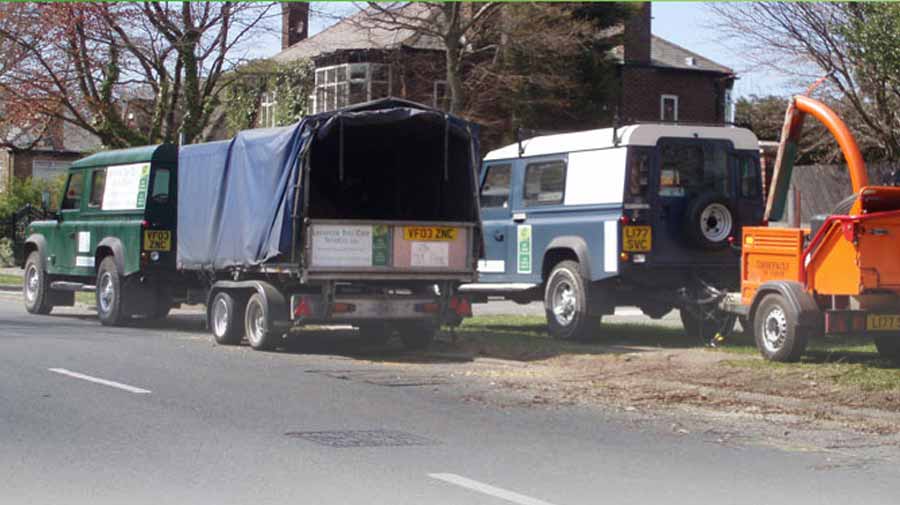Tree Crown Reduction

The comprehensive range of pruning operations Liverpool Tree Care Services provide are always in accordance with modern arboricultural practice and in line with our ethos towards 'proper tree care'. All our work is carried out to the highest professional standard and as per BS3998: 2010 – Recommendations for Tree Work.
Crown Reduction
The reduction in height and/or spread of the crown (the foliage bearing portions) of a tree. Crown reduction may be used to reduce mechanical stress on individual branches or the whole tree, make the tree more suited to its immediate environment or to reduce the extent of shading and light loss etc. The final result should retain the main framework of the crown, and so a significant proportion of the leaf bearing structure, and leave a similar, although smaller outline, and not necessarily achieve symmetry for its own sake. Crown reduction cuts should be as small as possible and in general not exceed 100mm diameter unless there is an overriding need to do so. Reductions should be specified by actual measurements, where possible, and reflect the finished result, but may also refer to lengths of parts to be removed to aid clarity, e.g. ‘crown reduce in height by 2.0m and lateral spread by 1.0m'.
Crown reduction is also used to provide adequate clearance from adjacent properties and may be specified with reference to the proposed clearance from a building e.g. 'reduce crown on building side to give 2m clearance'.
Crown Reduction is not suitable for all species of tree, or indeed for any individual tree deemed unsuitable by a competent tree surgeon for technical and/or arboricultual reasons, and should not be confused with ‘topping’, an indiscriminate, unskilled & damaging method of pruning resulting in an unaesthetic & unhealthy tree.
Crown Thinning
Crown thinning is the removal of a portion of smaller/secondary foliage bearing branches, usually at the outer crown, to produce a uniform & reduced density of foliage around an evenly spaced branch structure. It is generally confined to broadleaved species such as Lime, Sycamore, Beech, Oak etc.
Crown thinning does not alter the overall size or shape of the tree. Material should be removed in a balanced approach throughout the tree to achieve the proposed reduction in density, generally accepted as ranging from 10% – 30% dependant on tree species, age & health. Common reasons for crown thinning are to allow more light to pass through the tree to benefit adjacent garden spaces & properties, reduce wind resistance & reduce weight / wind throw forces on the main stem & root plate.
Crown Lift
Crown lifting is the removal of the lowest branches and/or preparing of lower branches for future removal. Good practice dictates crown lifting should not normally include the removal of large branches growing directly from the trunk as this can cause large wounds which can become extensively decayed leading to further long term problems or more short term biomechanical instability. Crown lifting on older, mature trees should be avoided or restricted to secondary branches or shortening of primary branches rather than the whole removal wherever possible.
Crown lifting is an effective method of increasing light transmission to areas closer to the tree and/or space underneath the tree, or to enable improved access under the crown. Crown lifting should be specified with reference to a fixed point, e.g. ‘crown lift to give 5.5m clearance above ground level’ - for example over an adjacent highway.
Crown Clean
Tree Crown Cleaning & Dead Wooding refers to the removal of dead, dying or diseased wood in the crown of the tree. It also involves attention to snags & previous poor pruning, re-pruning of branch stubs, control of unwanted climbing plants, and safe removal of accumulated windblown debris, damaged or weak crown material.
Pollarding
Pollarding is a pruning system, which controls the final size of a tree and historically was conducted for the production of fodder and wood products. The process was carried out on young trees, removing the main stem and releasing dormant buds to produce multi stemmed growth.
Nowadays pollarding is beneficial for a wide range of reasons, it is an effective way to significantly reduce the amount of shade cast by a large tree situated within a confined space, it prevents trees from outgrowing their local environment and is commonly used in urban situations where trees might hinder neighbouring properties or overhead cables.
Many different species of trees can be pollarded on a regular basis and in some cases, it can be an effective way to rejuvenate a tree and to prolong its life. The best examples for pollarding include the broadleaves such as Ash, Plane, Lime, Willow, Poplar and in specific circumstances Beech & Hornbeam.
Pollarding of mature trees is a drastic measure only undertaken when other options such as crown reduction are considered insufficient in exceptional circumstances such as structural weakness in the crown or main stem, significant conflict with adjacent property / public highway or space etc., or simply considered of unsuitable size for its location. Pollarding can provide a 'second best' alternative to complete removal of the tree, retaining a mature pollarded tree for many years. Should you require any of the above services, or need further advice on which options can offer the best solution for your requirements please feel free to call Liverpool Tree Care Services today, your leading Liverpool Tree Surgeon.